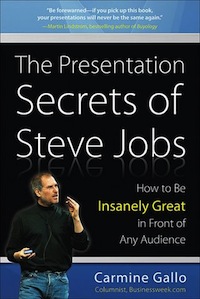 Read the first part of this article here
Read the first part of this article here
For thousands of years, humanity has used oral narrative as the main means to spread knowledge. Almost all of us intuitively understand the importance of telling a story. It’s something we carry in our DNA.
And if so, why most of our business presentations are so boring?
The scenario is this: we need to sell an idea, convince the audience in less than thirty minutes. Our food security depends on it. It’s a defining moment, and yet, we do it in the most torturous and overbearing way possible.
We can say that it’s because of our insecurities: fear of public-speaking, doubts over the idea or product we’re about to sell. But I propose that what really goes on here is that we don’t know that the best way to convey a message is through a story.
Corporate narrative
If there was someone that knew how to make a presentation was Steve Jobs. Each one of his interventions in the recurring releases of Apple products, are memorable. Not only does he provide information, but he also proposes a scenario, shares a vision, inspires his audience and takes them by the hand through a transformation process that leads to an obvious conclusion. In other words, he tells a story.
But we can’t all be Steve Jobs. So, in this situation, author and corporate communications expert, Carmine Gallo suggests that:
As long as you have a product, service, a company or a cause that improves someone’s life, you have a story to tell. However, you can make that story either really boring or really interesting. But I often think that there is a story. You just have to extract it.
In his book, The Presentation Secrets of Steve Jobs: How to Be Insanely Great in Front of Any Audience, Carmine Gallo deconstructs several of Job’s presentations and shows you the steps to create the narrative of your product. For example:
The Headline
I’ve seen my share of Steve Job presentations and I’d never stop to think on the first element pointed out by Gallo: in each presentation, Jobs presents each product with a one-phrase headline. For example: Mackbook Air “the world’s thinnest notebookâ€, or the original Ipod “1000 songs in your pocketâ€, or the Iphone “Apple reinvents the phoneâ€. These phrases appeared in the slides and in the press releases, and in the product literature and, naturally, the media got hooked on the magic of an idea that summarizes everything.
The headline is where we need to start. It’s the first thing we should say when making a presentation: the theme of the day, the idea that our audience will stay with at the end of the presentation. How many of us do that?
I’m not exaggerating when I say this: Presentation Secrets… changed my life forever. I realized that I’d never really known how to sell an idea or a product until I read it. Since then, all my presentations are narrative, (proving that literature is worth for something) well-rehearsed, have a headline and a theme and tell the story of a company with certain problems that we’re going to solve. I even learned to present data in a way that people can understand it right away. For me, Presentation Secrets… made the difference between giving excellent presentations that would occasionally sell, and telling memorable stories that almost always sell.